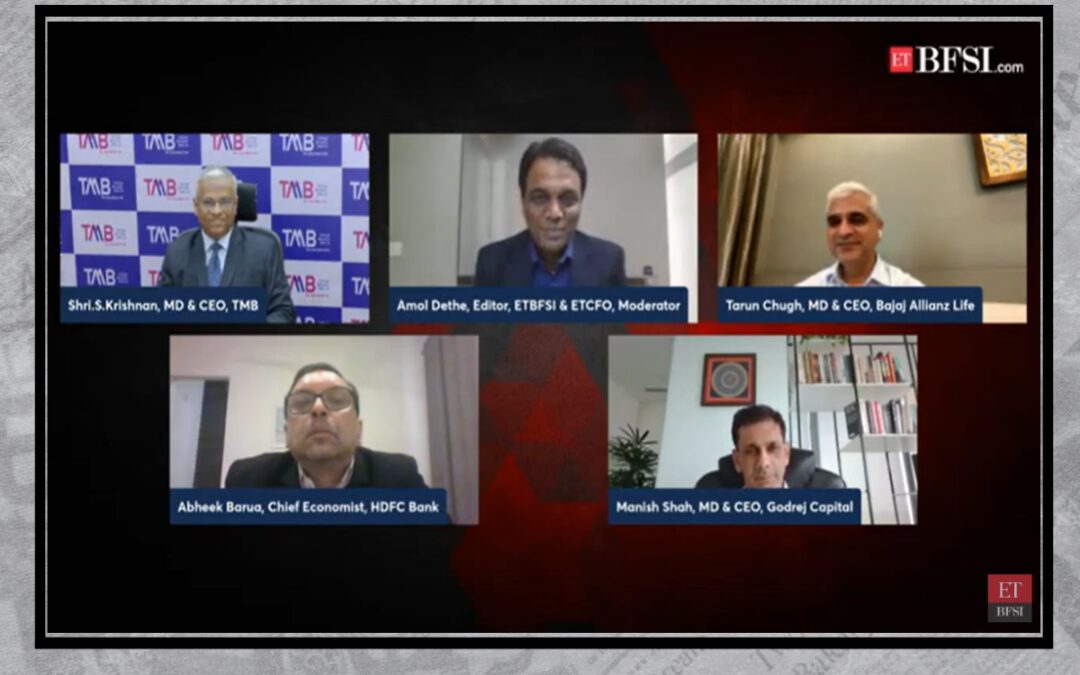~ Shrishti Sharma
Throughout the four episodes of the ETBFSI Union Budget Series 2024, panelists consistently emphasised the significance of capital expenditure (Capex). As we delve into the critical aspects of budgetary allocations, a key focal point emerges—the ambitious Fiscal Deficit target of 4.5% by FY 2025-26. The looming question persists: Can this target be realistically achieved?
Abheek Barua, Chief Economist at HDFC Bank says, “I expect the continued emphasis on the government’s expenditure switching to capital expenditure rather than revenue expenditure. Fiscal consolidation, the quality of expenditure, and targeted welfare are what will be the pillars of Sitharaman’s budget.”
“Infrastructure spending alone cannot achieve the 4.5 per cent goal; we need measures to stimulate private capital expenditure.” adds Manish Shah, MD & CEO, Godrej Capital.
Shah underscores the significance of capacity utilisation, stating that when production capacity exceeds 80%, it typically signals economic growth. However, he raises concerns about the lack of private investment in new projects, which could impede overall economic progress. The Reserve Bank of India’s move to lower risk measures reflects apprehensions about overheating in consumer lending.
“The public and private sector balance sheets are both cleaned, and our credit growth has outpaced deposits. This indicates a stronger financial position and a robust lending environment.” pointed out Krishnan Sankarasubramaniam, MD & CEO, Tamilnad Mercantile Bank.
A nuanced approach to economic planning, where there is a recognition of the importance of capital expenditure, coupled with an emphasis on fiscal responsibility, efficient resource allocation, and the need to catalyse private sector investments for holistic and sustainable economic growth.
How important is creating a fiscal space?
In the past three years, uncertainties have wielded significant influence, with the backdrop of a global pandemic, the Ukraine-Russia war, and widespread monetary tightening. These events underscore the profound impact uncertainties can have on the global landscape.
Abheek Barua of HDFC Bank questions, “Can this always be tackled with monetary policy? We need fiscal space and buffers in order to tackle the challenges head-on.”
Selling government assets and PSU disinvestment can also be the proposed solutions.
In the BFSI sector, formalisation is underway through the GST and EPFO networks, accompanied by an improvement in living standards, making individuals more creditworthy. The credit market is expanding, attributed to the formalisation of small businesses and increased disposable income for consumers. Recognising this enhancement in creditworthiness, there is a need to incorporate these dynamics into the broader budget policy for sustained economic growth.
How do Risk Weights and Premiums shape Priority Sector lending?
“I believe that if we bring down the risk weights on MSME lending, we can provide more support, take calculated risks, and ensure a continuous flow of credit,” remarked Manish Shah of Godrej Capital
In the realm of priority sector lending, Manish Shah sheds light on the critical dynamics of risk weights and risk premiums. Risk weights, denoting the capital banks reserve based on perceived loan risk, pose challenges for MSME lending, requiring higher capital allocation. Shah underscores that a reduction in risk weights would empower banks to extend more loans, overcoming capital limitations.
Lenders grapple with intricate credit terms, hindering their lending potential despite the aspiration to increase outreach. Shah acknowledges SIDBI and CGTSMEI initiatives to mitigate risks in MSME lending but emphasises persistent challenges, particularly in sectors impacted by export downturns.
To sustain credit flow, Shah advocates for paying higher risk premiums, an extra compensation for risk, especially crucial in sectors facing export challenges. Urging government intervention, he calls for a scrutiny of risk weights for priority sector lending, emphasising regulatory adjustments to incentivise banks toward sectors pivotal for economic growth, notably the MSMEs. This integrated strategy aims to foster targeted and sustained lending, driving economic expansion in priority sectors.
The need for diversified pension products
“Long-term investments of this nature do require some help from the government, the economies doing well in the segment do have tax benefits, the government is still supporting.” mentions Tarun Chugh, MD & CEO, Bajaj Allianz Life Insurance
In the midst of a potential shift in India’s tax regime, there’s a growing need for significant government support to promote long-term investments in the financial landscape. Calls for diversifying pension savings beyond the National Pension Scheme (NPS) echo, emphasising the exploration of various pension schemes.
Chugh also raised concerns regarding annuities, with insufficient attention given to the risks of longer lifespans and challenges related to double taxation. Additionally, the burden of an 18% GST on insurance products is highlighted as excessively high, posing obstacles to financial product accessibility.










